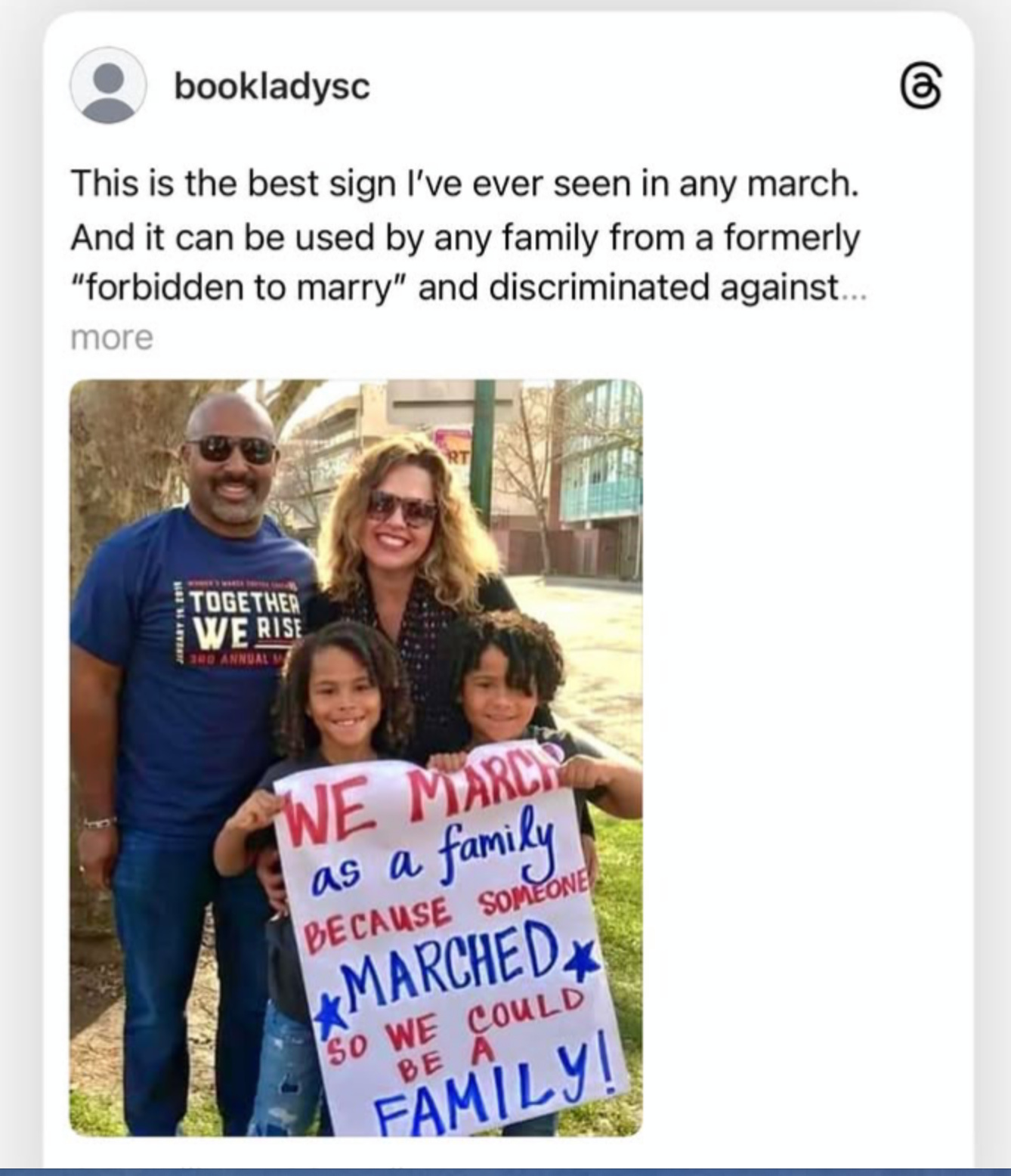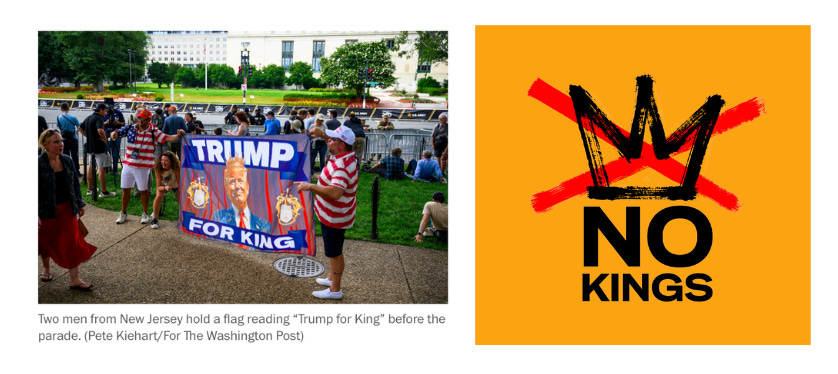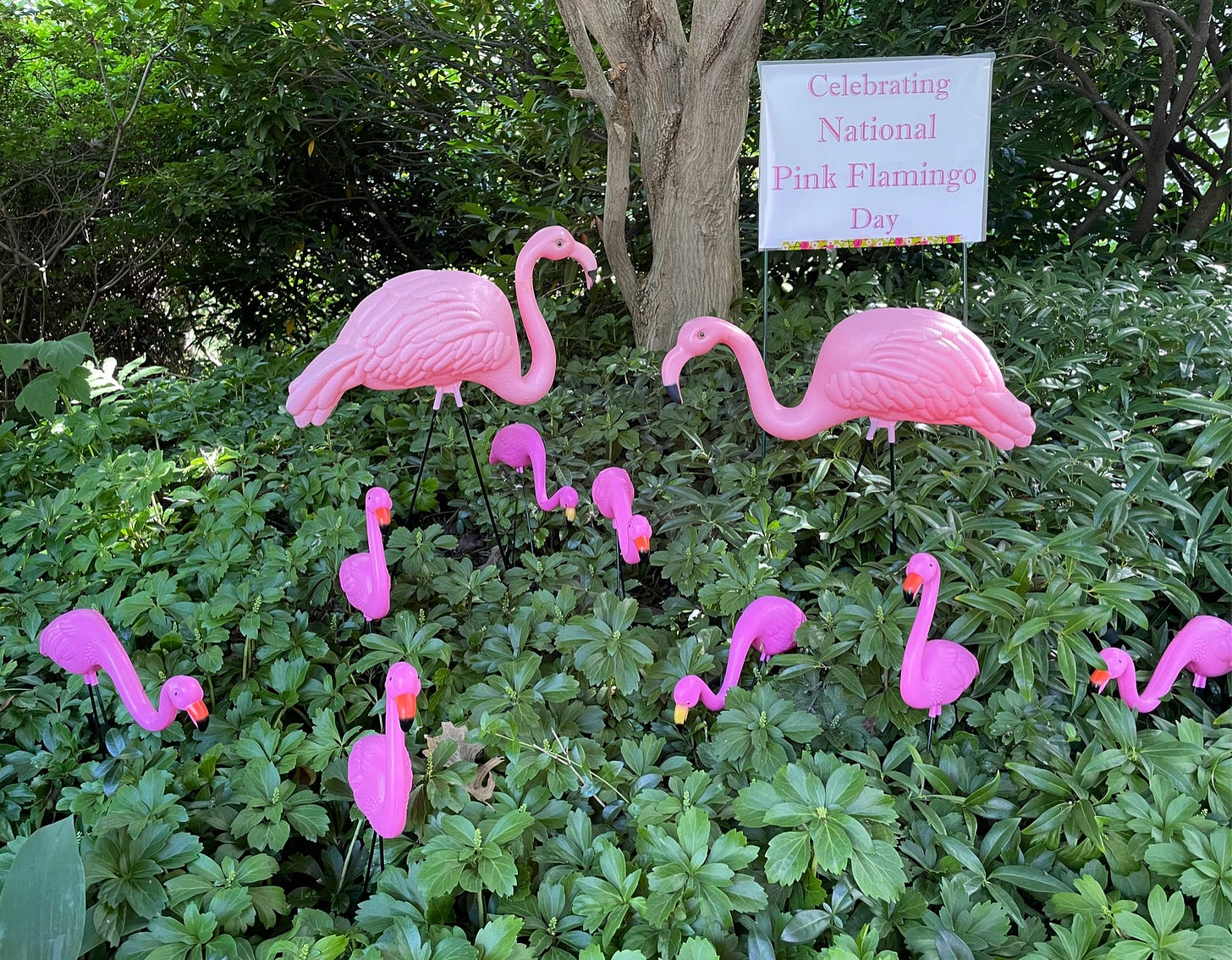Gentle Readers: I’m prompted to address you in that manner after seeing an exhibit about Jane Austen at the Morgan Library in New York City. It included a reproduction of a quilt made by Austen, her mother and sister. (Author photos below.) As I explained when I launched PINK THREADS, quilts and other female handcrafts are another record of the lives of women in every culture, on every continent.
Recent PINKS have prompted a patchwork of positive and provocative reader responses. (Have I mentioned that one of the reasons I quit law school was the faculty’s dismissal of an abundance of alliterative adjectives? The other was to elope.)
Readers’ comments follow, in quotation marks and in order of PINK publication dates. My commentary appears in italics.
CONSTANCE BAKER MOTLEY (5.17):
“You mention Charlotte Ray and her Howard Law School degree. It's interesting that Howard Law and Howard Medical both admitted women in the late 1800s, when other schools were reluctant (or refused) to do so. Hence, more than a few WHITE women graduated from there in that period.
“Re Sandra Day O'Connor and her female clerks, I got to know her pretty well through the thrice weekly morning exercise class that she organized in the SCOTUS gym, both for her clerks, then additionally including a group of neighborhood Capitol Hill "ladies of a certain age." I attended for a long time, and she continued that sponsorship and her own steady attendance well into her "semi-retirement," when her prior allotment of three clerks was reduced to one. Over the years she'd also come to understand how important it was for her to make a special effort to be inclusive, since the white male power structure, including her fellow justices, otherwise would not. Hence, she took me aside one morning and sadly rued that for the first time she simply hadn't found the "right" female candidate, and thus had resorted to appointing a white man as her single upcoming clerk. "But," she reassured me, "he's legally blind." (I LOVE that story.)
“The country's a scary mess! Keep on keepin' on.”
1924 IMMIGRATION ACT (5.24): While in NYC last week with my daughter and grandson, we visited the Tenement Museum (www.tenement.org). A unique museum experience, located at the corner of Orchard and Delancey Streets in the Lower East Side, it offers tours of the flats and the neighbor inhabited by immigrants whose arrivals, c. 1850-1960, prompted America’s increasingly restrictive laws. Each tour is based on a real family, who inhabited a specific apartment at 97 Orchard Street: the Schneiders from Germany, c. 1855; the Moores, Irish immigrants who came following the famine and rented there in 1869; a Black family named Moore who arrived after the Civil War; the Rogarshevskys and Baldino families, Russian and Italian, who came in 1900; the Confinos, Seraphic Jews, c. 1913; the Epstein and Velez families, Holocaust survivors and Puerto Ricans, who lived nearby in the 1960s. Research about these families began with census and city records.
We visited the three-room flat of the Levine family. Jacob and his 17-year-old bride Jennie were Polish Jews who came to the US in 1890 to escape a pogrom. In 1902, their third-floor walk-up housed the couple, three children and one on the way. Five workers occupied the front room, sewing garments from Sunday to Friday, so they did not have to work in a factory on the Sabbath. Jacob worked the sewing machine, another man was the presser, in the kitchen, and three women did the hand-stitching ten hours a day. There was no running water, a sink with no drain, no toilets, a coal burning fireplace. Jennie went up and down 70 stairs multiple times a day, emptying chamber pots, bringing up water and coal, taking down ashes. There were four outhouses in the rear shared by all the residents.
In 1902, she participated in a strike, protesting increased price of kosher beef set by the midwestern meat monopoly. Below are a newspaper report and the trial transcript. Note language that parallels today’s xenophobia.
LOVING V. VIRGINIA (6.12): This picture was posted on the anniversary of the Supreme Court’s 1967 decision.
SALLY RIDE (6.18): “Yuk: ‘With the current administration’s dismissal of DEI and erasure of history, it’s important to acknowledge that our culture has its own history of ignoring and diminishing ‘others.’’ I don’t think it is useful to throw in such inaccurate and radically partisan comments. It detracts from an otherwise very good and informative article. It calls the historical accuracy and balance of all your writing into question. It plays to a small and rapidly shrinking audience. DEI was destructive to “other’s” and their opportunities. It was an insult to Sally Ride and “others” who were outstanding in their fields. It diminished the successes of past and current “others” who earned their successes. It was used as an authoritarian weapon, stifled freedom of speech, often distorted history, and was as bad as any of the historically bad behaviors you call into question. It weakened institutions. And you ignore the fact that the current administration is led by a significant number of outstanding women.”
(I’m trying to differentiate between responses by using quotation marks; Substack does not allow different fonts.)
Just one note about Sally Ride: No women or non-white men could compete to become astronauts until NASA was forced to comply with the 1964 Civil Rights Act. Many segments of the federal government, including the Congress, remain exempt.
“Once again, I am made aware of the bias built into our schools and media. As much as I read and as many years as I have been a student or a teacher, much of what you have presented was either unknown or barely known to me. I feel the John Glenn dismissal of female capabilities is a stunning example of the mindset which pervaded our society and, to a still unfortunate degree, still does.”
“I was excited to see a mention of the WASPs . . . my maternal grandmother was a WASP. As a teenager, she learned how to fly in secret at a field near her family's farm in Pennsylvania; her parents found out when the local paper ran a story about her being the first woman to earn a license at the field!”
“I love this column and the fact that you are bringing this forgotten history into public consciousness. I tell the story of the Mercury 13, Sally Ride, and other women in the space program in my program Women of the Seas and Stars in which I portray Jerrie Cobb. Information at www.tellingherstories.com.”
Recently the Kennedy Center displayed quilts made from blocks featuring the moon, made students in grades 7-12. The project was initiated by retired astronaut Karen Nyborg, a mechanical engineer and a quilter. The descendant of Scandinavian immigrants to Minnesota, she became the fiftieth American woman in space on her first flight in 2008. While living on the International Space Station in 2013, Nyborg made one quilt square and issued a challenge.
Her star design prompted people around the world to submit 2,400 quilt squares, which volunteers at the Johnson Space Center crafted into the 28 king-size quilts. The new project was to interest students in astronomy and produced quilts featuring the moon.
Another random factoid: when I was searching for illustrations for FORMIDABLE, I didn’t want them all to be headshots. For Geraldine Ferraro, the first female candidate for vice president nominated by a major party, I wanted a campaign button. The one I found was in the Sally Ride Collection at the Smithsonian Air and Space Museum.
When journalist Lauren Sanchez invited an all- female crew of celebrities and scientists to join her on an eleven-minute, suborbital Blue Origin flight, underwritten by her fiancé Jeff Bezos, it was the first women-only flight since Soviet cosmonaut Valentina Tereshkova’s 1963 solo spaceflight.
Sanchez described her guests as “women who are making a difference in the world and who are impactful and have a message to send.” Music supernova Katy Perry’s supports sundry causes through her Firework Foundation. Journalist and CBS Mornings host Gayle King overcame her fear of flying to participate. Aisha Brown is a former NASA rocket scientist and global advocate of STEM education. Amanda Nguyen, a bioastronautics research scientist and advocate for survivors of sexual violence, became the first Vietnamese-born woman to enter space. Kerianne Flynn, a film producer, recently released “Lilly,” about Lilly Ledbetter’s equal pay case that reached the Supreme Court and resulted in the 1993 Lilly Ledbetter Act.
One of the issues for women serving as astronauts or in the military has been the adaptability (or not) of standard (male) uniforms for female bodies. For her flight, Sanchez ordered custom-designed, body hugging, neoprene flight suits. Maybe her flight will result in greater advocacy on behalf of women astronauts and soldiers.
STONEWALL (6.28):
“So much of this transpired when I was an adult, a working reporter, and naive about it all. I remember that President Obama could not bring himself to accept same sex marriage until he was running for RE-ELECTION! And to cautiously enter the fray, he made his change public in a gentle interview with Good Morning America’s popular anchor Robin Roberts on May 9, 2012. Her own public reveal came a year later. Robin wed her longtime partner Amber a decade later, in 2023. During that time public opinion on same sex marriage changed rapidly.”
“Hummm. Where is the several paragraph outrage (or at least snarky aside) and history lesson about Obama and Hillary Clinton both strongly opposing gay marriage?? Of course, Hillary changed her position when it was convenient to do so.”
“Until today, I never knew or learned so much about gay pride and other related movements. What a history, and what a movement. Thank you for another researched and comprehensive essay on a component of U.S. history that is an integral part of all of us. Discrimination in this forum should have been unacceptable from the outset. The earlier reference to homosexuals as "sick" should never have happened. In my mind we are all creatures of God's creation. Some people are right-handed and others left-handed. Some have blue, gray, or brown eyes. A person's sexual orientation is, in my unprofessional and non-medically trained [opinion], a DNA or genetic selection, not a voluntary election.”
I found this 1956 photograph of Storme DeLarverie, who dressed as a drag queen the night he started the Stonewall riot, in the MET exhibit mentioned below. (From the Prints Division of the NYPL.)
Because my grandson is a LEGO master, I visit a lot of LEGO stores, where I found this project:
DECLARATION OF INDEPENDENCE (7.4):
“I see the forthcoming 250th anniversary as a time to revisit . . . our values and who we are as Americans. I am a Patriot, but not a member of the Sons of the American Revolution, though eligible, if I pursued it. In 1931 when the DAR was restoring the Moor/More House in Yorktown, where Cornwallis signed the surrender documents in 1781, the DAR hung a portrait of Alexander Frazier, a South Carolina Patriot in the dining room. It overlooks the table where the surrender documents were signed. Frazier, according to family information, was my ancestor on the other side of the color line. He paid 93,000 pounds or $6,000,000 in today’s dollars to feed, clothe, house, and train much of the South Carolina militia during the Revolutionary War. His White descendants recognize and laud him for that contribution to our freedom. The Black descendants mostly don't know and don't care.”
Every summer I visit New York’s Metropolitan Museum’s annual Costume Institute fashion exhibit, which is launched by the extravagant MET Gala in May. According to the catalogue, this year’s exhibit, “Superfine: Tailoring Black Style,” designed by MET curators and historians, “presents a cultural and historical examination of Black style over three hundred years through the concept of dandyism. In the 18th-century Atlantic world, a new culture of consumption, fueled by the slave trade, colonialism, and imperialism, enabled access to clothing and goods that indicated wealth, distinction, and taste. Black dandyism sprung from the intersection of African and European style traditions.”
Among the items was a suit worn by Frederick Douglass.
As he proclaimed in his July 5, 1852, speech, “What to the Slave Is the Fourth of July?”, Douglass was confident that America would eventually live up to the ideals of the Declaration of Independence. Today many Americans wonder if the principles of democracy – rule of law, separation of powers, equality and justice -- will survive. It will if we fight for it.
I hope PINK THREADS support and advance our democracy by recalling our country’s history, as heroic and flawed as the human beings who lived it. I appreciate your support, as engaged readers and paid subscribers. Thank you!
PS: June 23 was National Pink Flamingos Day. (Below: Photo of her flock taken by another denizen of the deep end at water aerobics.)

















